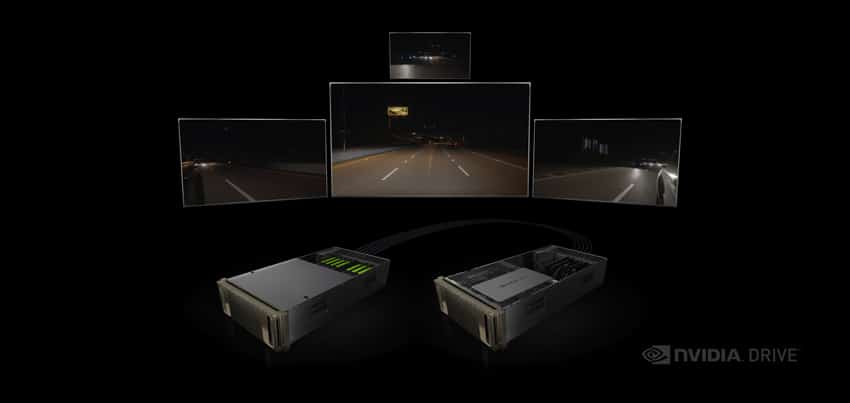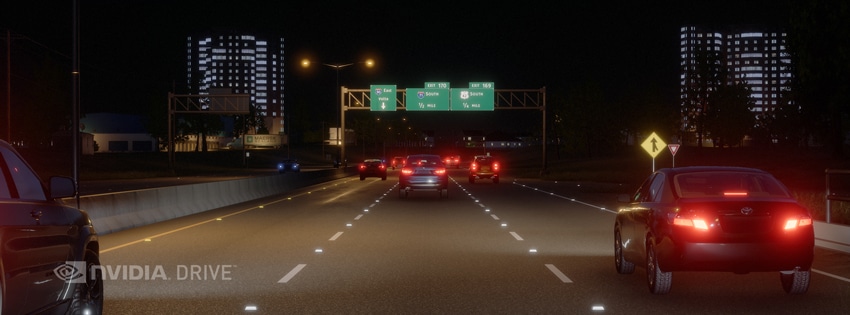Today at GTC 2018, NVIDIA introduced its new cloud-based system for testing autonomous vehicles using a photorealistic simulation, NVIDIA DRIVE Sim software. This simulation is all about making the autonomous vehicles safer while providing a more scalable method for bringing them to the roads. They also announced the NVIDIA DRIVE Pegasus AI car computer to run the autonomous software stack and process the data from driving.

Autonomous vehicles are already on the streets and will soon be driving people around versus being tested. However, there are still lots of steps that need to be taken to avoid accidents like the one in the news recently that involved a fatality. NVIDIA is combining its visual computing expertise with its processing power with its DRIVE Constellation Simulation System.

To no surprise, the simulation is powered by NVIDIA GPUs. The data they generate is fed to the DRIVE Pegasus to be processed and fed back to the simulator. This happens 30 times a second and validates algorithms to ensure the simulated vehicle is operating correctly. The DRIVE Sim software can create a large range of testing environments such as storms, difference in light that can affect the cameras, and different surface types. This way companies can test how their cars react to dangerous situations without endangered people or the product.
Availability
The NVIDIA DRIVE Constellation is expected to be available in the third quarter of 2018.




 Amazon
Amazon